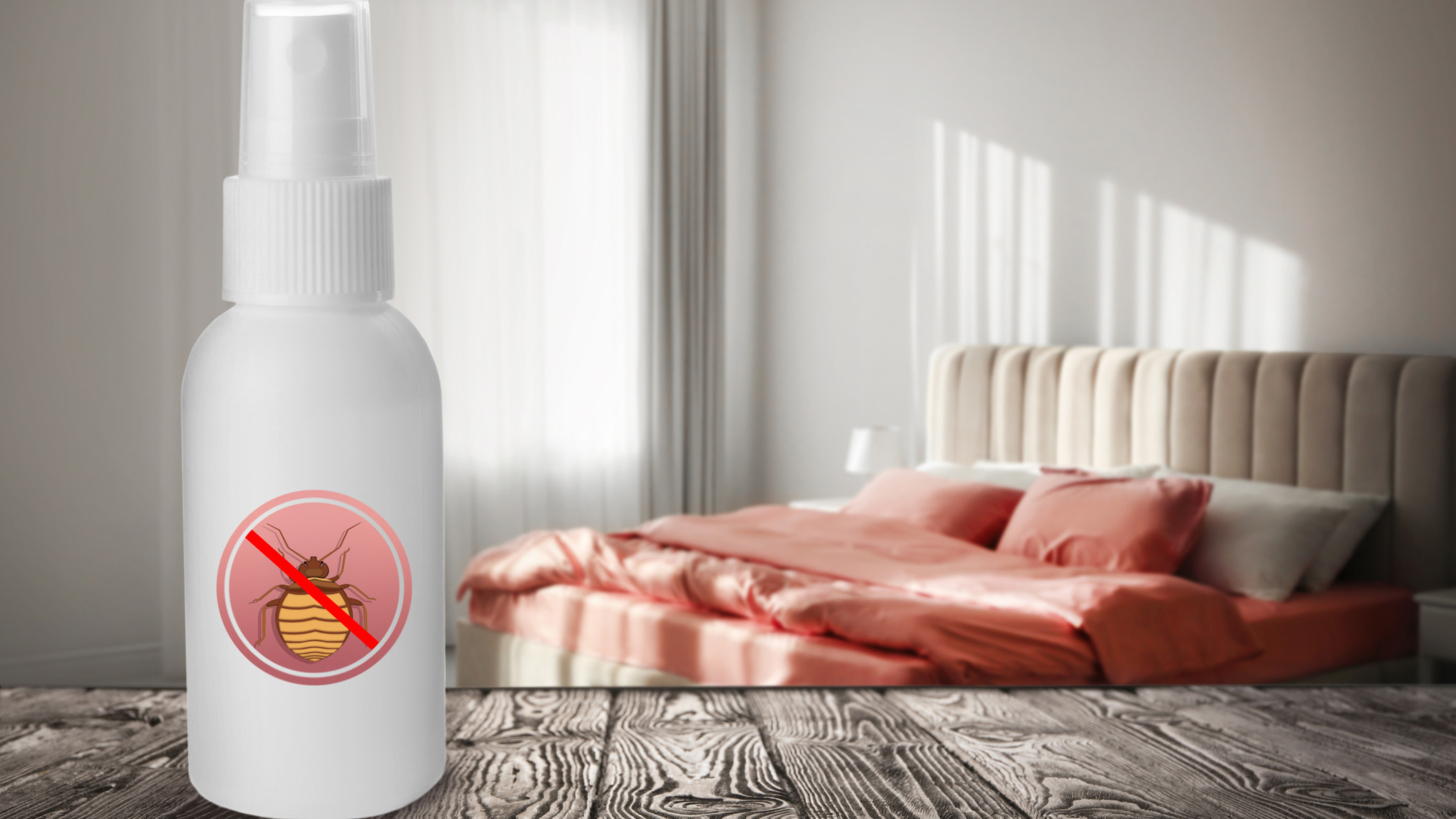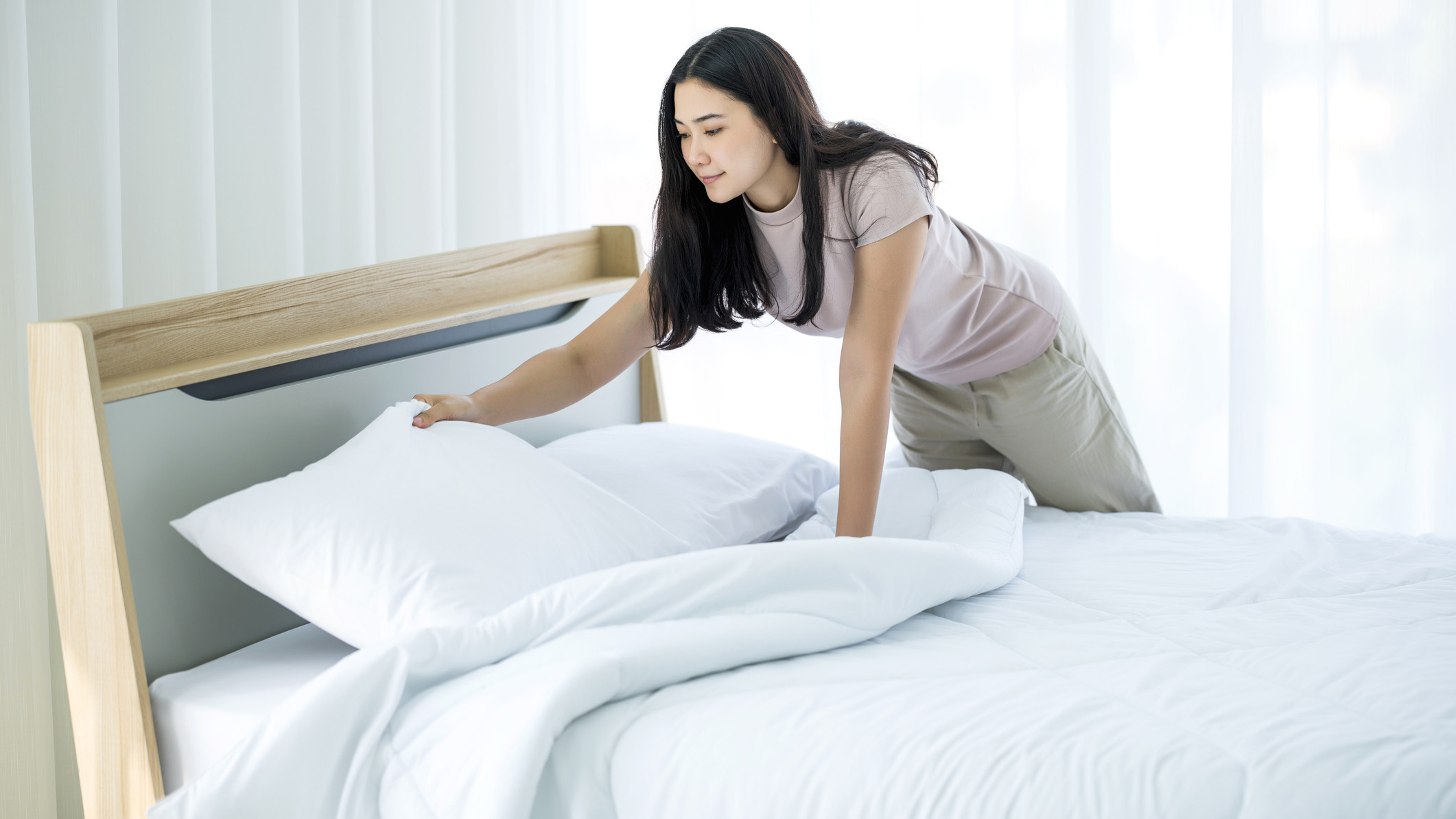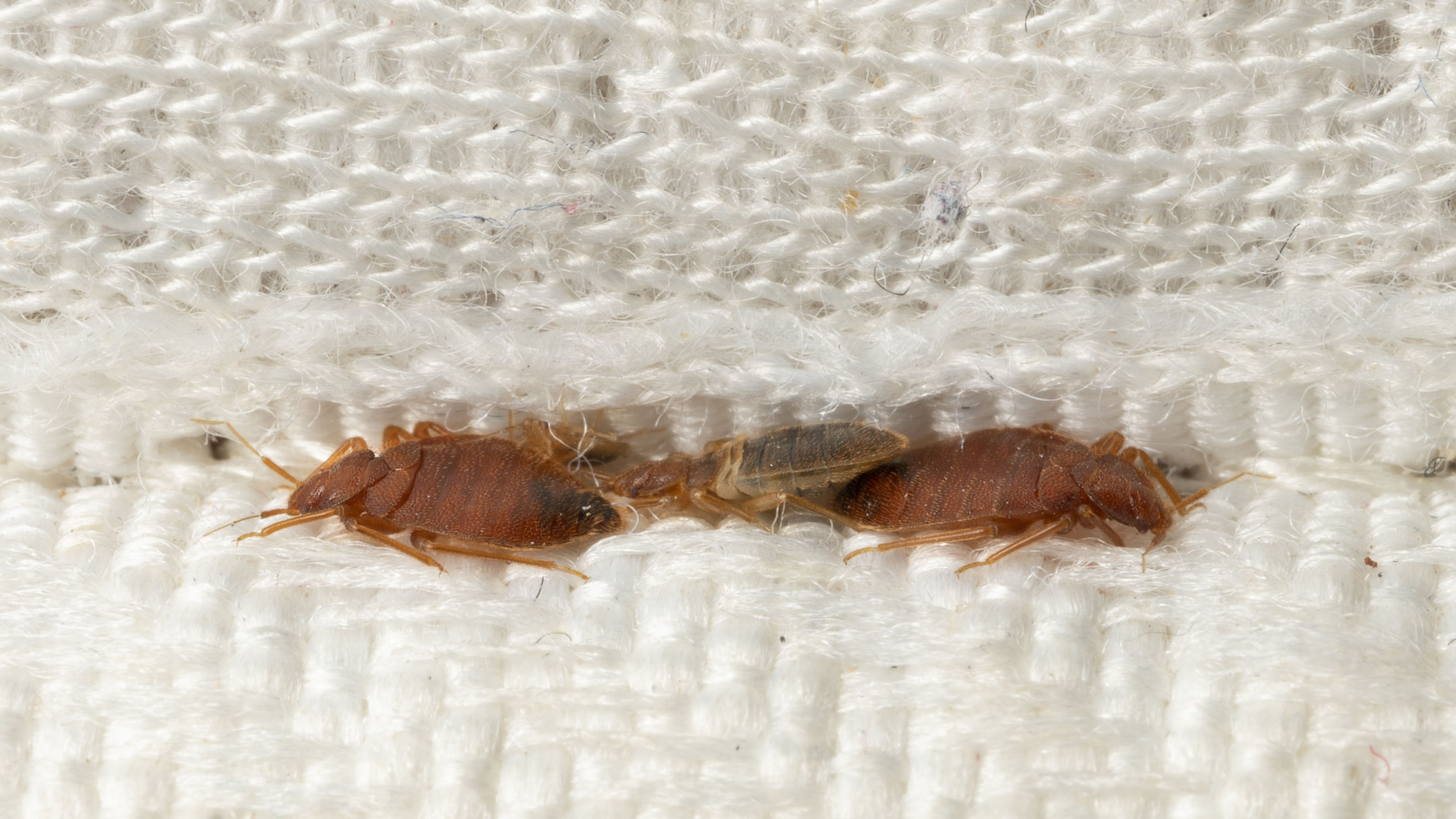
Dust mites and bed bugs are very different pests, but no one wants either inside their mattress. These prolific pests can be very hard to eradicate if they get a grip on your bedding, which is why many people turn to dust mite and bed bug sprays. But are these damaging to your mattress?
Here we tell you all about using dust mite and bed bug sprays on mattresses, helping you to weigh the risks and decide what's right for your bed. If you do feel your mattress is beyond saving, we’d recommend keeping an eye on the upcoming Memorial Day mattress sales as many of this year's best mattresses for all sleepers will be dropping in price.
Here's what you need to know about using dust mite and bed bug sprays on your mattress, plus the signs that you already have an infestation on your hands.
What are dust mite and bed bug sprays?
There are a variety of sprays on the market designed to deal with dust mites and bed bugs. These are pesticides, with pyrethrin and pyrethroid being two of the most common compounds. Some sprays are also desiccants, which dry out the insects and eventually kill them.
Many people group dust mites and bed bugs together, but in fact these are different pests. Dust mites are microscopic insects that feast on dead skin flakes shed by humans and pets. At only 0.2 to 0.3mm long, they’re invisible to the naked eye, but you’ll know you have them if you’re waking up every morning with serious allergy or cold symptoms.
Bed bugs, on the other hand, feed on the blood of humans and animals. They are larger than dust mites, growing to 5mm in length and are of a reddish-brown colour. You may be able to see them on a bed, or not their eggs, skin or faeces. Bed bugs also leave behind blood stains and bites on the skin.
Are dust mite and bed bug sprays safe on mattresses?

Every mattress is constructed differently, so we’d say it’s essential to check brand guidelines before applying any spray to a mattress. Remember that most of these sprays contain pesticides. So it’s important to be extremely careful with any type of mattress and to make sure that any spray is applied in a well-ventilated room, before being left for as long as possible for smells to dissipate.
Hybrid mattresses
The best hybrid mattresses are made from a combination of foams and coils. And whilst the coils won’t attract any pests, the foams could. Again, check with your mattress brand first, but it is generally safe to use a spray on hybrid mattresses.
Memory foam mattresses
Memory foam mattresses are designed to offer sinkage, giving sleepers a distinctive ‘hug’. But even the best memory foam mattresses can sleep warm because of this, creating a moist environment that pests love.
Although you can lightly spray a memory foam mattress, you cannot get it wet or the foam will be damaged. You may be better off looking for a specific desiccant to dry out the insects, whilst avoiding getting your mattress wet.
Latex and wool mattresses
Latex and wool are both naturally hypoallergenic materials and latex in particular is less likely to harbour bed bugs and dust mites. However, they can still live on the surface of latex, so mattresses may still need treating. You’ll often find latex and wool in some of the best organic mattresses on the market, so you might want to consider using a more natural alternative to deal with pests.
Can you use dust mite and bed bug spray on pillows and sheets too?

Because of the pesticides used in these sprays, we wouldn’t recommend using them on pillows and sheets, as we have direct contact with these and our skin. The chemicals in the spray could cause skin reactions or even an allergic reaction if inhaled in as we sleep.
Instead, we’d recommend stripping the bed and washing all your linens on a hot wash once a week. And, if you do have a dust mite and bed bug infestation, make sure you also wash any duvets or pillows at a similarly high temperature. Once all the bedding has been removed, you can then vacuum your mattress before treating with spray.
Homemade dust mite and bed bug sprays
There are various natural ways to get rid of dust mites and bed bugs, which could be preferable to using pesticides. If you have children or pets in the house, or unable to leave your mattress to air for long periods of time, a natural method could be safer all round.
Some people swear by diatomaceous earth, but this is a rather messy way to deal with bugs. Instead, you could try mixing up a combination of essential oils to kill bed bugs and dust mites. We like this video’s ingredients, which uses a combination of lavender, peppermint, eucalyptus and tea tree essential oils. These are combined with distilled water and either vodka or white hazel.
How to choose a dust mite and bed bug spray
There are several different types of spray available, and our preference would always be to look for one that is both child and pet safe. We wouldn’t recommend contact insecticides, as these only work if you spray them directly onto the bug.
They also don’t kill eggs. Instead, look for a pyrethroid product that has been combined with another type of insecticide, as some bed bugs are beginning to build up a resistance to pyrethroid on its own.
Avoid insecticide dusts on mattresses as these can be dangerous when inhaled. And remember that whatever product you choose, it’s vital to check first that it’s safe to use on your specific mattress.

Do all mattresses contain dust mites and bed bugs?
Studies estimate that nearly 85% of homes in the United States have detectable levels of dust mites in at least one mattress. This isn’t surprising really, considering that these little pests live off dead skin cells, which we humans shed every night as we sleep.
The good news though is that not all mattresses will have bed bugs. Bed bugs tend to be rife in places that have a high turnover of people coming through them, such as hotels and hostels.
If you’ve recently been away, it’s important to put all your clothing through a hot wash as soon as you get home. And if you’re concerned about bed bugs, we’d recommend placing your luggage into a seal plastic bag for a few days to kill off any bugs.
Symptoms of dust mites and bed bugs in your mattress
So you think you might have pests lurking in your mattress? But do you know whether you have dust mites or bed bugs? These are the signs to look out for and, once you know what they are, our guide on how to prevent bed bugs in your mattress will help out take the next necessary steps.
Dust mites
- Runny nose
- Sneezing
- Coughing
- Itchy, watering eyes
- Heightened asthma symptoms
- Waking up with hay fever symptoms
- Waking up feeling as if you have a heavy cold
- Trouble sleeping
- Severe reactions could cause difficulty breathing and chest tightness
Bed bugs
- Blood stains
- Eggs
- Shed skins
- Faeces
- Musty odour
- Bites
- You see the bed bugs
How to prevent dust mites and bed bugs in your mattress
Bed bugs and dust mites can be prolific if they’re allowed to get a hold in your mattress. So taking steps to prevent them from becoming a problem is a wise idea. Here are the steps to take to prevent these pests living in your bed.
1. Regularly clean your mattress
Bed bugs and dust mites will thrive in dirty conditions, because there’s more for them to feed on. This is why learning how to clean a mattress properly is so important. As well as washing all your linens and bedding, you should also vacuum your mattress regularly to get rid of as many surface bugs as possible.
Cleaning a mattress with baking soda twice a year can also help to prevent stains and sweat building up, both of which can harbour an attractive environment for pests.
2. Buy a mattress encasement
If you’re worried you might have bed bugs, sealing them in a mattress encasement is one way to kill them off – particularly if you’ve decided to get rid of the mattress and want to prevent bugs from spreading while you get rid of it.
However, mattress encasements can be used all the time to help prevent bed bugs from ever getting into your mattress. Our best mattress protectors round-up includes some zippered mattress encasements, which will cover the top, bottom and all four sides of the mattress.
3. Keep pets out of your bed
We all love our furry friends, but adding their hair and dead skin cells to our own will only increase the risk of dust mites and bed bugs. With more to live on, there’s a possibility of a bigger infestation.
4. Lower the temperature in your bedroom
Bed bugs and dust mites thrive in warm, moist conditions. This is why you’ll often find them in crevices in the mattress and bed. By keeping your room cooler at night, you should also sweat less and hopefully provide a slightly less hospitable environment for these bugs.







